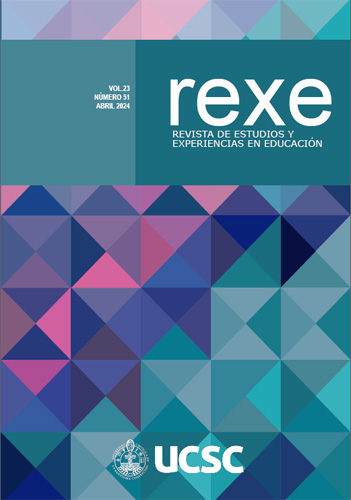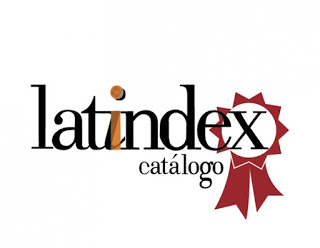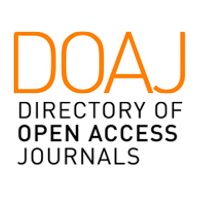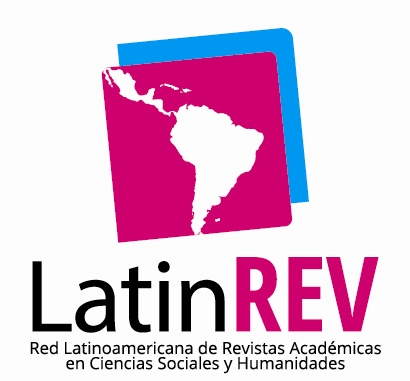Evaluation of Teacher Induction Programs (E-Tip): Validity of the Criteria
DOI:
https://doi.org/10.21703/rexe.v23i51.1706Palavras-chave:
Education & Training, Educational Administration, Induction of Labor, Teacher Preparation, Job RotationResumo
O objetivo do presente estudo era validar os critérios de um instrumento criado para garantir a qualidade dos programas de indução de professores. Era uma pesquisa aplicada com uma abordagem de método misto. A amostra era não-probabilística por conveniência. O instrumento foi construído com base na bibliografia disponível, e o conteúdo foi validado pelo julgamento de especialistas através de uma escala Likert com um alfa de Cronbach de 0,86. O V de Aiken foi aplicado ao julgamento dos especialistas. Os 14 critérios de relevância tiveram uma aprovação média de 80,6% contra 3,6% de desaprovação e, de acordo com o V de Aiken, todos os itens deveriam ser incluídos na versão final da escala. Em conclusão, o critério E-Tip resultou em ser válido na validação do conteúdo. Além disso, é preciso investigar mais a fundo os instrumentos qualitativos para avaliar os critérios mencionados.
Downloads
Referências
Allal-Chérif, O., Yela Aránega, A., & Castaño Sánchez, R. (2021). Intelligent recruitment: How to identify, select, and retain talents from around the world using artificial intelligence. Technological Forecasting and Social Change, 169. https://doi.org/10.1016/j.techfore.2021.120822 DOI: https://doi.org/10.1016/j.techfore.2021.120822
Al-Romeedy, B. Samir. (2019). The role of job rotation in enhancing employee performance in the Egyptian travel agents: the mediating role of organizational behavior. Tourism Review, 74, 1003–1020. https://www.emerald.com/insight/content/doi/10.1108/TR-10-2018-0153/full/html DOI: https://doi.org/10.1108/TR-10-2018-0153
Amushila, J., Bussin, M. H. R., & Bussin, M. (2021). SA Journal of Human Resource Management. https://doi.org/10.4102/sajhrm
Asamoah, D., Agyei-Owusu, B., & Ashun, E. (2020). Social network relationship, supply chain resilience and customer-oriented performance of small and medium enterprises in a developing economy. Benchmarking, 27(5), 1793–1813. https://doi.org/10.1108/BIJ-08-2019-0374 DOI: https://doi.org/10.1108/BIJ-08-2019-0374
Badrianto, Y., & Ekhsan, M. (2020). EFFECT OF WORK ENVIRONMENT AND JOB SATISFACTION ON EMPLOYEE PERFORMANCE IN PT. NESINAK INDUSTRIES. Journal of Business, Management, and Accounting, 2(1), 85–91. http://e-journal.stie-kusumanegara.ac.id
Bakker, T., Dugué, P., & de Tourdonnet, S. (2021). Assessing the effects of Farmer Field Schools on farmers’ trajectories of change in practices. Agronomy for Sustainable Development. https://doi.org/10.1007/s13593-021-00667-2/Published DOI: https://doi.org/10.1007/s13593-021-00667-2
Bencsik, A. (2021). The sixth generation of knowledge management – the headway of artificial intelligence. Journal of International Studies, 14(2), 84–101. https://doi.org/10.14254/2071-8330.2021/14-2/6 DOI: https://doi.org/10.14254/2071-8330.2021/14-2/6
Bermúdez Restrepo, H. L. (2011). La inducción general en la empresa. Entre un proceso administrativo y un fenómeno sociológico. Universidad & Empresa, 21, 117–142. http://www.redalyc.org/resumen.oa?id=187222420006
Bloom, N., Bunn, P., Mizen, P., Smietanka, P., & Thwaites, G. (2022). Staff Working Paper No. 900. The impact of Covid-19 on productivity. (No. 900; Staff Working Paper ). www.bankofengland.co.uk/working-paper/staff-working-papers
Böckerman, P., & Ilmakunnas, P. (2008). Interaction of working conditions, job satisfaction, and sickness absences: Evidence from a representative sample of employees. Social Science and Medicine, 67(4), 520–528. https://doi.org/10.1016/j.socscimed.2008.04.008 DOI: https://doi.org/10.1016/j.socscimed.2008.04.008
Boukis, A., & Christodoulides, G. (2020). Investigating Key Antecedents and Outcomes of Employee-based Brand Equity. European Management Review, 17(1), 41–55. https://doi.org/10.1111/emre.12327 DOI: https://doi.org/10.1111/emre.12327
Bozu, Z. (2009). El profesorado universitario novel y su proceso de inducción profesional. https://www.redalyc.org/pdf/2810/281021548008.pdf
Bretones, F. D., & González, J. M. (2009). Absentismo y rotación laboral. Psicología Del Trabajo, January 2009, 91–113. https://www.researchgate.net/publication/302167865_Absentismo_y_rotacion_laboral
Bureau of Labor Statistics, U. S. (2020). Department of Labor, Occupational Outlook Handbook, Postsecondary Teachers. https://www.bls.gov/ooh/education-training-and-library/postsecondary-teachers.htm#tab-4
Çakmak, M., Gündüz, M., & Emstad, A. B. (2019). Challenging moments of novice teachers: survival strategies developed through experiences. Cambridge Journal of Education, 49(2), 147–162. https://doi.org/10.1080/0305764X.2018.1476465 DOI: https://doi.org/10.1080/0305764X.2018.1476465
Cambridge Dictionary. (2022). Meaning of TEACHER. https://dictionary.cambridge.org/es/diccionario/ingles/teacher
Colmenárez, L. (2008). Proceso de Inducción del Personal Docente del Decanato de Administración y Contaduría de la UCLA. 11, 5–22. https://www.taylorfrancis.com/books/mono/10.4324/9781003223207/improvising-teacher-nick-sorensen
del Giudice, M., Scuotto, V., Papa, A., Tarba, S. Y., Bresciani, S., & Warkentin, M. (2021). A Self-Tuning Model for Smart Manufacturing SMEs: Effects on Digital Innovation. Journal of Product Innovation Management, 38(1), 68–89. https://doi.org/10.1111/jpim.12560 DOI: https://doi.org/10.1111/jpim.12560
Du, Y., & Liu, H. (2020). Analysis of the influence of psychological contract on employee safety behaviors against COVID-19. International Journal of Environmental Research and Public Health, 17(18), 1–14. https://doi.org/10.3390/ijerph17186747 DOI: https://doi.org/10.3390/ijerph17186747
Ellerbrock, C. R., Main, K. M., & Virtue, D. C. (2022). Middle Level Teacher Preparation across International Contexts: Understanding Local and Global Factors Influencing Teacher Education. https://doi.org/https://doi.org/10.4324/9781003213789 DOI: https://doi.org/10.4324/9781003213789
Fernández De Pelekais, C., el Kadi, O., & Financial, K. (2019). Happiness as a potential tool of productivity in financial organizations. Revista Global Neotium, 2(2), 99–112. https://www.researchgate.net/publication/335541185 DOI: https://doi.org/10.53485/rgn.v2i2.78
Flores Gómez, C. X. (2014). Inducción de profesores novatos en Chile: un estudio de caso. Pensamiento Educativo. Revista de Investigación Educacional Latinoamericana, 51(2), 41–55. https://doi.org/10.7764/PEL.51.2.2014.4 DOI: https://doi.org/10.7764/PEL.51.2.2014.4
Garay, L. (2010). Paradigmas en la Investigación Educativa. In MMINEDU Perú. http://www2.minedu.gob.pe/digesutp/formacioninicial/?p=411
González Brito, A. I., Araneda Garcés, N., Hernández González, J., & Lorca Tapia, J. (2005). Inducción Profesional Docente. Estudios Pedagógicos (Valdivia), 31(1). https://doi.org/10.4067/s0718-07052005000100003 DOI: https://doi.org/10.4067/S0718-07052005000100003
González Torres, A. (2019). Procedimiento de trabajo para facilitar el diseño de perfiles de cargos por competencias en la Universidad Central “Marta Abreu” de las Villas [Universidad Central “Marta Abreu” d elas Villas]. http://dspace.uclv.edu.cu:8089/handle/123456789/11283
Grados, J. (2013). Reclutamiento, selección, contratación e inducción del personal. https://www.academia.edu/34731979/Reclutamiento_selección_contratación_e_inducción_del_personal_Jaime_Grados
Hamurabi Sözen, P. (2018). CHALLENGES OF NOVICE TEACHERS. IJAEDU-International E-Journal of Advances in Education, IV(12). http://ijaedu.ocerintjournals.org/en/download/article-file/615408 DOI: https://doi.org/10.18768/ijaedu.478254
Hernández-Sampieri, R., & Mendoza Torres, C. P. (2018). Hernández-Sampieri, R. & Mendoza, C. (2018). Metodología de la Investigación. Las Rutas cuantitativas, cualitativa y mixta. Mc Graw Hill Education. https://doi.org/https://doi.org/10.22201/fesc.20072236e.2019.10.18.6 DOI: https://doi.org/10.22201/fesc.20072236e.2019.10.18.6
IGI Global. (2022). What is Teacher. https://www.igi-global.com/dictionary/family-community-higher-education-partnership/48939
Iwuanyanwu, P. N. (2022). Facilitating Problem Solving in a University Undergraduate Physics Classroom: The Case of Students’ Self-Efficacy. Interdisciplinary Journal of Environmental and Science Education, 18(2), e2270. https://doi.org/10.21601/ijese/11802 DOI: https://doi.org/10.21601/ijese/11802
Jai, T. M. (Catherine), Fang, D., Bao, F. S., James, R. N., Chen, T., & Cai, W. (2021). Seeing It Is Like Touching It: Unraveling the Effective Product Presentations on Online Apparel Purchase Decisions and Brain Activity (An fMRI Study). Journal of Interactive Marketing, 53, 66–79. https://doi.org/10.1016/j.intmar.2020.04.005 DOI: https://doi.org/10.1016/j.intmar.2020.04.005
Johnson, A., Galloway, C., Friedlander, E., & Goldenberg, C. (2019). Advancing educational quality in Rwanda: Improving teachers’ literacy pedagogy and print environments. International Journal of Educational Research, 98, 134–145. https://doi.org/10.1016/j.ijer.2019.08.016 DOI: https://doi.org/10.1016/j.ijer.2019.08.016
Koehler, A. A., & Kim, M. C. (2012). Improving Beginning Teacher Induction Programs through Distance Education. CONTEMPORARY EDUCATIONAL TECHNOLOGY, 2012(3), 212–233. https://doi.org/https://doi.org/10.30935/cedtech/6079 DOI: https://doi.org/10.30935/cedtech/6079
Kozikoglu, I. (2017). A content analysis concerning the studies on challenges faced by novice teachers. Cypriot Journal of Educational Sciences, 91–106. https://www.ceeol.com/search/article-detail?id=965396 DOI: https://doi.org/10.18844/cjes.v12i2.1278
Kraiger, K. (2022). Online I-O graduate education: Where are we and where should we go? Industrial and Organizational Psychology, 15(2), 151–171. https://doi.org/10.1017/iop.2021.144 DOI: https://doi.org/10.1017/iop.2021.144
Le, H. T. Q., & Nguyen, T. H. (2022). A study on Non-English Major Students’ Learner Autonomy: Difficulties and Solutions. International Journal of TESOL & Education, 2(3), 197–207. https://doi.org/10.54855/ijte.222313 DOI: https://doi.org/10.54855/ijte.222313
Leu, E. (2005). The Role of Teachers, Schools, and Communities in Quality Education: A Review of the Literature (1st ed.). Academy for Educational Development, Incorporated . https://files.eric.ed.gov/fulltext/ED490174.pdf
Levin, J. M., & Kleiner, B. H. (1992). How to reduce organizational turnover and absenteeism. https://doi.org/https://doi.org/10.1108/00438029210018633 DOI: https://doi.org/10.1108/00438029210018633
Macgregor, E., Hsieh, Y., & Kruchten, P. (2005). Cultural Patterns in Software Process Mishaps: Incidents in Global Projects. Workshop on Human and Social Factors of Software Engineering, 2–5. https://doi.org/doi:10.1145/1083106.1083116 DOI: https://doi.org/10.1145/1083106.1083116
Marcelo, C. (2009). Los comienzos de la docencia: un profesorado con buenos principios. 13, 1. https://recyt.fecyt.es/index.php/profesorado/article/view/41898
Marcelo, C., Mayor, C., & Murillo, P. (2009). MONOGRÁFICO: PROFESORADO PRINCIPIANTE E INSERCIÓN PROFESIONAL A LA DOCENCIA. Revista de Currículum y Formación Del Profesorado, 13(1), 1. https://revistaseug.ugr.es/index.php/profesorado/article/view/20568/20045
Marcelo García, C. (1999). Estudio sobre estrategias de inserción profesional en Europa. Revista Iberoamericana de Educación, 19, 1–33. https://rieoei.org/historico/oeivirt/rie19a03.htm DOI: https://doi.org/10.35362/rie1901056
Mejía Pérez, G. (2019). Un panorama del mercado laboral docente en la Educación Superior en México. Revista de Educación Superior En América Latina. https://doi.org/ttp://dx.doi.org/10.14482/esal.5.378.122 DOI: https://doi.org/10.14482/esal.5.378.122
Merriam-Webster. (2022). Teacher Definition & Meaning. https://www.merriam-webster.com/dictionary/teacher
Min, Y., Yexiang, F., Weilin, T., & Jiajie, Z. (2020). Study on safety behavior planning theory and control strategies for coal chemical workers. Safety Science, 128. https://doi.org/10.1016/j.ssci.2020.104726 DOI: https://doi.org/10.1016/j.ssci.2020.104726
Mlekus, L., & Maier, G. W. (2021). More Hype Than Substance? A Meta-Analysis on Job and Task Rotation. In Frontiers in Psychology (Vol. 12). Frontiers Media S.A. https://doi.org/10.3389/fpsyg.2021.633530 DOI: https://doi.org/10.3389/fpsyg.2021.633530
Mustafa, M. ;, Alzubi, F. K. ;, & Bashayreh, A. (2022). Factors Affecting Job Performance of Teaching and Non-Teaching Staff in Higher Education Levels in Oman. Privacy Policy A/B Testing Terms of Use Copyright Cookie Policy. In Source: Ilkogretim Online. 2021 (Vol. 20). https://www.bibliomed.org/mnsfulltext/218/218-1616506690.pdf?1709690543
Neuer Colburn, A. A., & Bowman, S. N. (2021). CES-SUCCESS: A Role Induction Group to Prepare Future Counselor Educators. Journal for Specialists in Group Work, 46(2), 202–213. https://doi.org/10.1080/01933922.2021.1900961 DOI: https://doi.org/10.1080/01933922.2021.1900961
OECD. (2021). Education at a Glance 2021. OECD. https://doi.org/10.1787/b35a14e5-en DOI: https://doi.org/10.1787/b35a14e5-en
Omanović, V., & Langley, A. (2021). Assimilation, Integration or Inclusion? A Dialectical Perspective on the Organizational Socialization of Migrants. Journal of Management Inquiry. https://doi.org/10.1177/10564926211063777 DOI: https://doi.org/10.1177/10564926211063777
Orozco Delgado, V. H. (2001). Reflexiones teórico-metodológicas para desarrollar el proceso de inducción como apoyo a la gestión del recurso humano universitario. Revista Educación, 25(1), 27. https://doi.org/10.15517/revedu.v25i1.2929 DOI: https://doi.org/10.15517/revedu.v25i1.2929
Otele, E. P. W. (2022). Influence of Induction Practices On Service Delivery by Newly Employed Teachers in Primary Schools [JARAMOGI OGINGA ODINGA UNIVERSITY OF SCIENCE AND TECHNOLOGY]. http://ir.jooust.ac.ke:8080/xmlui/handle/123456789/10974
Oxford Advanced Learner’s Dictionary. (2022). Definition of teacher. https://www.oxfordlearnersdictionaries.com/definition/english/teacher
Öztürk, M. (2008). INDUCTION INTO TEACHING: ADAPTATION CHALLENGES OF NOVICE TEACHERS [Graduate School of Social Sciences of Middle East Technical University]. https://open.metu.edu.tr/handle/11511/18265
Pazyura, N. (2015). Progressive ideas in updating teacher trainning in developed countries. Proceedings of the National Aviation University, 2(63), 120–123. https://doi.org/https://doi.org/10.18372/2306-1472.63.8879 DOI: https://doi.org/10.18372/2306-1472.63.8879
Pedraja-Rejas, L., & Rodríguez-Ponce, E. (2015). El aseguramiento de la calidad: un imperativo estratégico en la educación universitaria. Ingeniare. Revista Chilena de Ingeniería, 23(1), 4–5. https://doi.org/http://dx.doi.org/10.4067/S0718-33052015000100001 DOI: https://doi.org/10.4067/S0718-33052015000100001
Puji Astuti, J., Sa, N., Diah Rahmawati, S., Yuli Astuti, R., Sudargini, Y., & Stikubank Semarang, U. (2020). The Effect of Work Motivation, Work Environment, Work Discipline on Employee Satisfaction and Public Health Center Performance. JOURNAL INDUSTRIAL ENGINEERING & MANAGEMENT RESEARCH ( JIEMAR), 1(2), 2722–8878. https://doi.org/10.7777/jiemar.v1i2
Qian, S. (2022). Reform and Innovation of Higher Education in Economic Reform Period. International Journal of Education and Humanities, 2(3). https://drpress.org/ojs/index.php/ijeh/article/view/382/320 DOI: https://doi.org/10.54097/ijeh.v2i3.382
Rewel Jiminez, S. J., Thi Anh, D., Ehsan Ullah, S., & Sadiq, M. (2021). Development of Human Resource Management Activities in Vietnamese Private Companies. In Turkish Journal of Computer and Mathematics Education (Vol. 12, Issue 14). https://www.researchgate.net/publication/355384107_Development_of_Human_Resource_Management_Activities_in_Vietnamese_Private_Companies
Reynoso Castillo, C. (2007). Notas sobre la Capacitación en México. 5, 165–190. https://www.redalyc.org/pdf/4296/429640260009.pdf DOI: https://doi.org/10.22201/iij.24487899e.2007.5.9519
Rodríguez, D. (2006). Gestión Organizacional (4th ed.). https://www.academia.edu/43370463/Gestion_Organizacional_Dario_Rodriguez
Rodríguez, D. (2013). Diagnóstico Organizacional. https://tecnoadministracionpub.files.wordpress.com/2019/08/libro_diagnostico_organizacional_dario_r.pdf
Rodríguez Mansilla, D., & Quezada Menares, S. (2007). Cultura en las Organizaciones del Tercer Sector. Revista Española Del Tercer Sector, 121–152. https://dialnet.unirioja.es/servlet/articulo?codigo=2376738
Rodriguez Vite, H. (2017). Importancia de la formación de los docentes en las instituciones educativas. Ciencia Huasteca Boletín Científico de La Escuela Superior de Huejutla, 5(9). https://doi.org/https://doi.org/10.29057/esh.v5i9.2219 DOI: https://doi.org/10.29057/esh.v5i9.2219
Rostini, D., Zaeni, R., Syam, A., & Achmad, W. (2022). The Significance of Principal Management on Teacher Performance and Quality of Learning. Jurnal Pendidikan, 14(2), 2513–2520. https://doi.org/10.35445/alishlah.v14i1.1721 DOI: https://doi.org/10.35445/alishlah.v14i2.1721
Ruffinelli Vargas, A. (2016). Ley de desarrollo profesional docente en Chile: de la precarización sistematica a los logros, avances y desafíos pendientes para la profesionalización. Estudios Pedagógicos, XLII(4), 261–279. https://doi.org/http://dx.doi.org/10.4067/S0718-07052016000500015 DOI: https://doi.org/10.4067/S0718-07052016000500015
Rymaniak, J., Lis, K., Davidavičienė, V., Pérez-Pérez, M., & Martínez-Sánchez, Á. (2021). From stationary to remote: Employee risks at pandemic migration of workplaces. Sustainability (Switzerland), 13(13). https://doi.org/10.3390/su13137180 DOI: https://doi.org/10.3390/su13137180
Salgado-Cruz, M., Gómez-Figueroa, O., & Juan-Carvajal, D. (2017). Niveles para la capacitación en una organización. Ingeniería Industrial, 38(2), 154–160. https://www.redalyc.org/pdf/3604/360452099004.pdf
Salokhojaeva, F. (2022). Methodology for the Development of Communicative Competence Through Steam Technologies. International Journal of Social Science Research and Review, 5(2), 111–116. https://doi.org/10.47814/ijssrr.v5i2.207 DOI: https://doi.org/10.47814/ijssrr.v5i2.207
Santiago Páez, M. (2019). Optimización del proceso pedagógico y la gestión docente: una mirada a los entornos virtuales de aprendizaje. https://doi.org/10.13140/RG.2.2.35697.63845
Segovia Gutierrez, E. (2020). Plan de acción en el área de talento humano para procesos de inducción y desarrollo del personal de la empresa Image S.A. http://repositorio.ucsg.edu.ec/handle/3317/14479
Shibru, B. (2022). Impact of Employee Turnover on Organizational Performance: The Case of Bekas Chemicals Plc., Ethiopia. Journal of Material Sciences & Manufacturing Research. https://doi.org/10.47363/JMSMR/2022(3)125 DOI: https://doi.org/10.47363/JMSMR/2022(3)125
Shipman, K., Burrel, D. N., & mac Pherson, A. H. (2021). An organizational analysis of how managers must understand the mental health impact of teleworking during COVID-19 on employees. International Journal of Organizational Analysis. https://doi.org/https://doi.org/10.1108/IJOA-03-2021-2685 DOI: https://doi.org/10.1108/IJOA-03-2021-2685
Sisto, V. (2011). New professionalism and teachers: a reflection from the analysis of current policies of “professionalism” for education in Chile. Signo y Pensamiento, XXXI(59), 178–192. http://www.scielo.org.co/scielo.php?script=sci_arttext&pid=S0120-48232011000200013
Sood, H., & Ong, C. E. (2022). Revisiting Job Rotation and Stress. In The Complexities and Strategies of Occupational Stress (pp. 300–322). https://doi.org/10.4018/978-1-6684-3937-1.ch017 DOI: https://doi.org/10.4018/978-1-6684-3937-1.ch017
Sorensen, N. (2022). The improvising teacher : reconceptualising pedagogy, expertise and professionalism (Routledge, Ed.). Taylor & Francis. https://doi.org/https://doi.org/10.4324/9781003223207 DOI: https://doi.org/10.4324/9781003223207
Strom, K. J., & Viesca, K. M. (2021). Towards a complex framework of teacher learning-practice. Professional Development in Education, 47(2–3), 209–224. https://doi.org/10.1080/19415257.2020.1827449 DOI: https://doi.org/10.1080/19415257.2020.1827449
The National Institute of Occupational Safety and Health. (2020). Quality of Worklife Questionnaire | NIOSH | CDC. Stress at Work. https://www.cdc.gov/niosh/topics/stress/qwlquest.html#download
Thomson, G. (2021). The Global Report on the Status of Teachers 2021. https://www.ei-ie.org/en/item/25403:the-global-report-on-the-status-of-teachers-2021
United Nations. (2020). Development program. Goal 4. Quality education. https://www.un.org/sustainabledevelopment/education/
University of Leeds. (2022). What is a Professor? : Professors and professorship: origins and history. https://professors.leeds.ac.uk/what-is-a-professor/
Velando Rodríguez, M. (2004). El proceso de abandono voluntario: revisión de las principales aportaciones realizadas en la literatura. Investigaciones Europeas de Dirección y Economía de La Empresa, 10(3), 157–169. https://dialnet.unirioja.es/servlet/articulo?codigo=1096696
Waychunas, W. (2022). Context and the Continuum: Insights and Connections Between Preparation, School Organization, and Beginning Teachers’ Instruction (pp. 338–358). https://doi.org/10.4018/978-1-6684-3848-0.ch017 DOI: https://doi.org/10.4018/978-1-6684-3848-0.ch017
Wendel, M. (2022). TEACHER PERCEPTIONS OF THE SUPPORTS AND BARRIERS FOR PROFESSIONAL COLLABORATION: A PHENOMENOLOGICAL STUDY [Middle Tennessee State University]. https://media.proquest.com/media/hms/PFT/2/iJ3oM?_s=NHJNF%2BzP%2BQmqw7P1dNObVa1LSR8%3D
Willis, U. M. (2022). Improving the beginning teacher induction program experience for African-American teachers within the green pastures school district: an applied study [Liberty University]. https://digitalcommons.liberty.edu/cgi/viewcontent.cgi?article=4656&context=doctoral
Yoon, I., & Kim, M. (2022). Dynamic patterns of teachers’ professional development participation and their relations with socio-demographic characteristics, teacher self-efficacy, and job satisfaction. Teaching and Teacher Education, 109(103565). https://doi.org/10.1016/j.tate.2021.103565 DOI: https://doi.org/10.1016/j.tate.2021.103565
Yurkofsky, M. (2022). From Compliance to Improvement: How School Leaders Make Sense of Institutional and Technical Demands When Implementing a Continuous Improvement Process. Educational Administration Quarterly, 58(2), 300–346. https://doi.org/10.1177/0013161X211053597 DOI: https://doi.org/10.1177/0013161X211053597
Downloads
Publicado
Edição
Seção
Licença
Copyright (c) 2023 María Mercedes Yeomans Cabrera, Jonathan Martínez-Líbano

Este trabalho está licenciado sob uma licença Creative Commons Attribution 4.0 International License.
Política de acceso abierto
Esta revista proporciona un acceso abierto inmediato a su contenido, basado en el principio de que ofrecer al público un acceso libre a las investigaciones ayuda a un mayor intercambio global de conocimiento.
Licencia
Revista REXE "Revista de Estudios y Experiencias en Educación" de la Facultad de Educación, Universidad Católica de la Santísima Concepción, está distribuido bajo una Licencia Creative Commons Atribución 4.0 Internacional.






